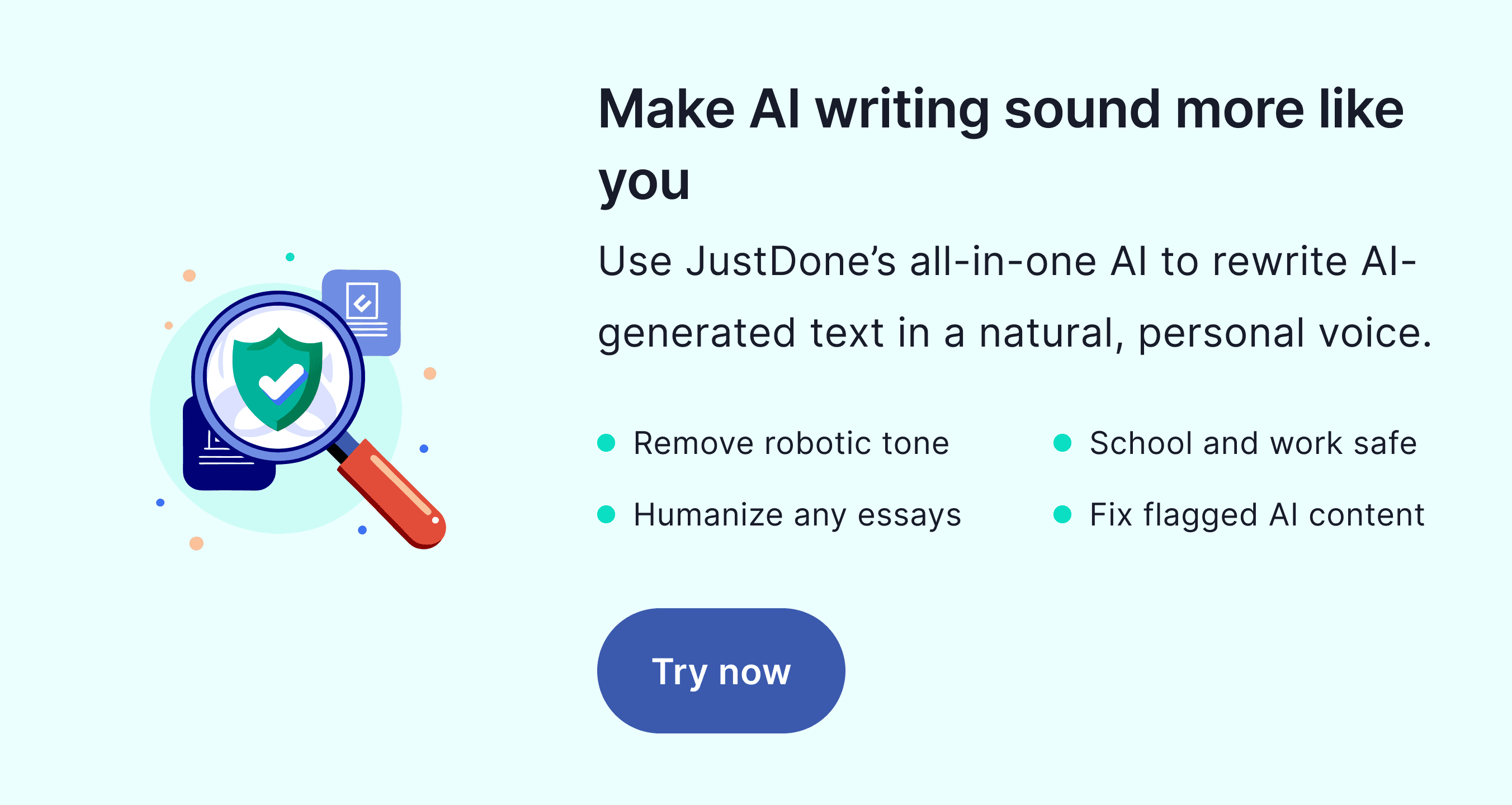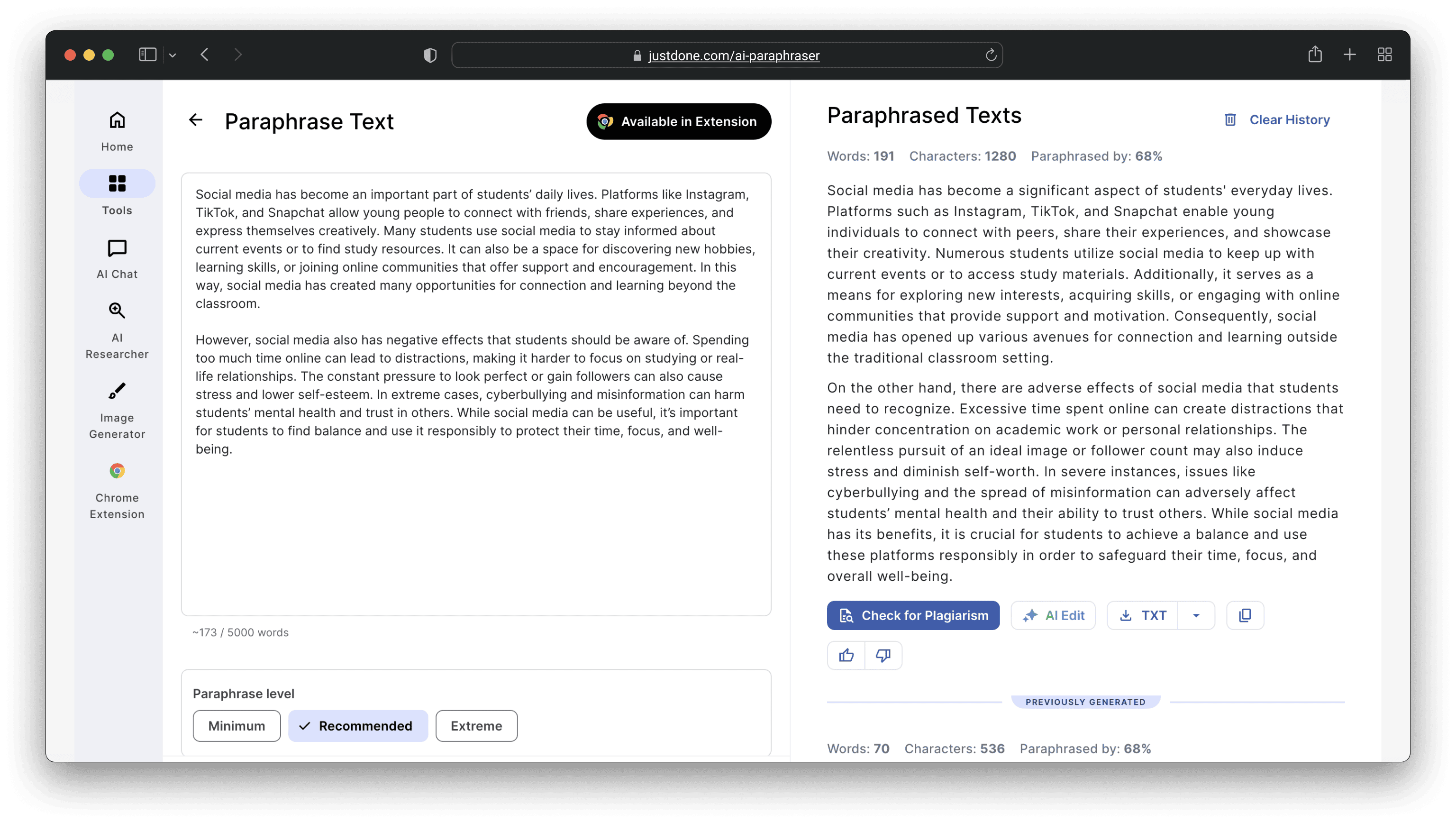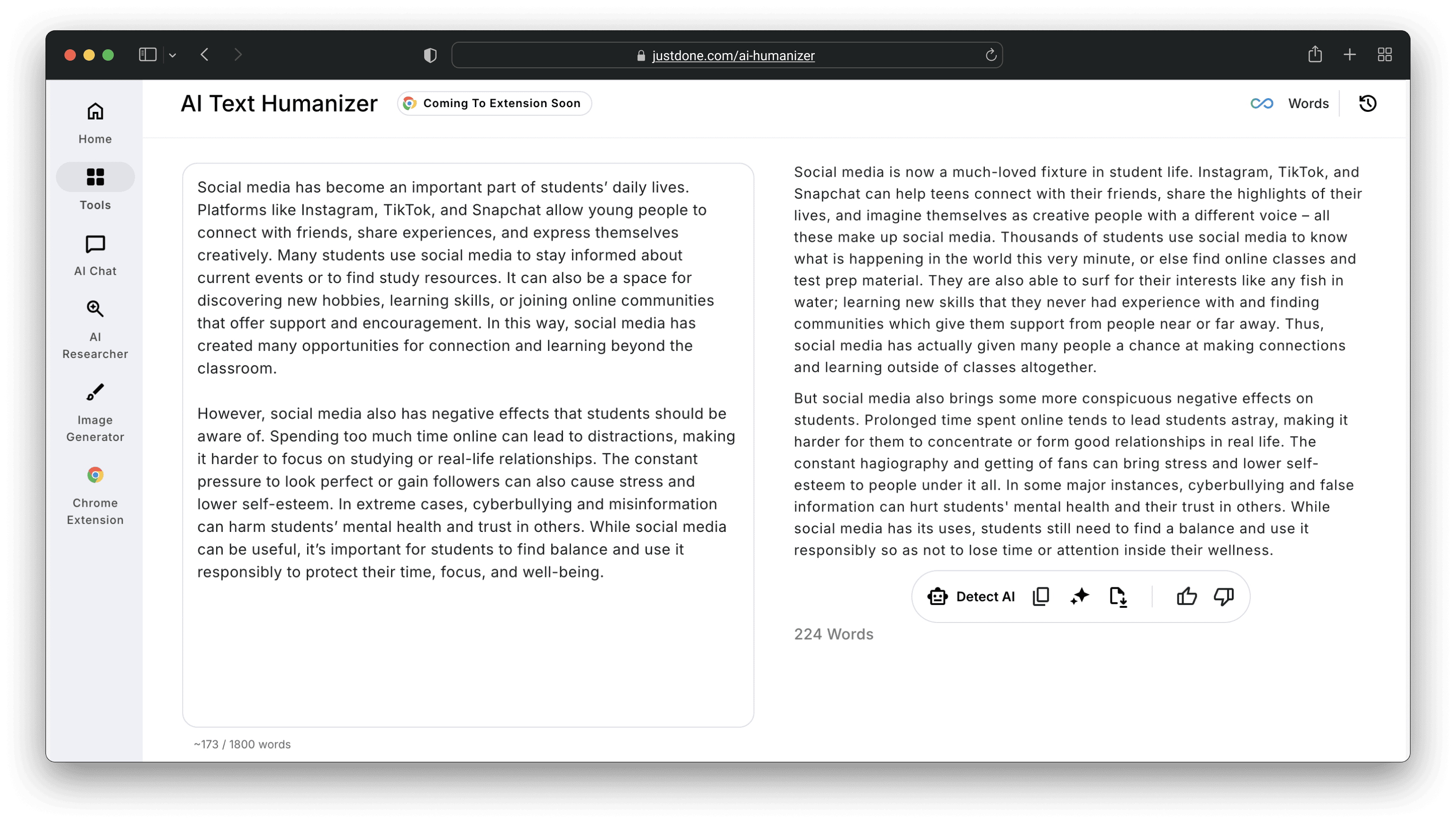New AI tools launch every month, each promising to make your work better, faster, and more “you.” These tools use prompts to produce text-based responses and turn ideas into words. But AI tools go beyond writing assistants. They inspire the rise of tools such as AI humanizers, paraphrasers, and AI rewriters.
In this guide, I'll explain what all these tools are, how they differ, and whether they can be detected by AI checkers.

What Each AI Writing Tool Does: AI Paraphraser vs Humanizer vs Rewriter
If you want to avoid plagiarism, you can use AI paraphraser, humanizer, or rewriter to change AI-like patterns in your work. But what's the difference between all three?
What is a paraphrasing tool?
Paraphrasing tools are designed to rewrite existing content. They reword or restructure a sentence (or paragraph) while keeping the same meaning. Think of them as a digital version of “say this differently.” AI paraphraser swaps words, reorders phrases, and rephrases sentences while keeping the same overall meaning. It’s especially useful when you want to reduce plagiarism by changing surface-level similarities. A classic use case is rewording ideas from a source or AI tool into your own language.
Here’s an example of JustDone AI Paraphraser.

Paraphrasers come in handy when you need to rewrite a source in your own words for a research paper. Or if you want to simplify academic language for a blog or presentation. As for me, I use paraphrasers to rework quotes or long definitions into my own tone. They’re fast, efficient, and often the first step in refining a rough draft.
Humanize AI to bypass AI detectors
Now, let’s talk about the new kid on the block: the AI humanizer. Their job is not just to rephrase, but to transform AI-generated or overly formal text into something that sounds like a human wrote it. They pay attention to tone, flow, and rhythm. If you’ve ever gotten an AI draft that reads like it belongs in a customer support script, this is the tool that makes it sound like you again. It’s especially helpful when you need to humanize AI generated text to avoid AI detection or to connect more authentically with your reader.
Here’s what that looks like with the following AI-generated text:

See the difference? It’s not just reworded; it feels human. The AI humanizer understands tone, clarity, and natural language in a way a basic paraphrasing tool can’t.
What is AI Rewriter
AI rewriters sit somewhere in between Paraphrasers and Humanizers. They aren’t focused on plagiarism or tone, but on refinement. An AI tool for rewriting helps improve clarity, fix grammar, and reshape sentence structure. It’s what I turn to when I’ve written something, but it still feels off. Think of it as a digital editor, one that helps your ideas shine more clearly.
For instance, let’s rewrite this sentence piece from a student's essay about social media. Here’s what it looks like after AI Rewriter:

This version improves clarity, structure, and tone, and that’s a typical benefit you’d get from a good AI tool for rewriting.
And a thing from my experience. One of the best parts about JustDone is that you don’t have to jump between platforms. You can access the AI Paraphraser, Humanize AI tool, and Rewriter all in one place — and switch between them instantly depending on your task. Everything is free to test, so you can try each approach and see which output fits your writing style best.
3 Tools Feature Comparison
Making it simpler to get into the differences between three tools, here’s a clear breakdown of what each tool can and cannot do:
| Feature | Paraphraser Tool | AI Humanizer | AI Rewriter |
|---|---|---|---|
| Rewrite for grammar improvement | No | Yes | Yes |
| Avoid plagiarism | Yes | Yes | Yes |
| Humanize AI-generated tone | No | Yes | Partially |
| AI detection bypass | No | Yes | Partially |
| Rewrite for clarity | Partially | Yes | Yes |
| Maintain original meaning | Yes | Yes | Yes |
| Change writing structure | No | Sometimes | Yes |
| Ideal for academic use | Yes | Yes | Yes |
| Speed & efficiency | High | Medium | High |
From the table, it’s crystal clear: if you want to quickly reword sentences to lower plagiarism, a paraphraser works well. But if you want to bypass AI detection and make your writing feel more human, Humanizer is the better fit. For general rewriting and editing purposes, an AI rewriter might be your best option.
When to Use Each Tool
Many students I work with make the same mistake: they use a paraphrasing tool to beat AI detection. Sometimes, it helps lower a plagiarism score, but often not. Not only words, but style and structure need to be redone to bypass AI detectors.
I recommend the following flow: Start with Humanize AI tool by JustDone to sound human. Then, refine the output with an AI rewriter or paraphraser to polish. That combination (humanize – paraphrase – rewrite) is the most effective for learners.
There’s also another scenario many students deal with. You paraphrase something well, but the result feels flat or too “safe.” Running it through AI humanizer gives it a new voice, and overall, it helps you sound more confident and connected to your argument.
If you're wondering how to paraphrase and humanize text without losing your meaning, this is it. Use a paraphrasing tool to build a safe foundation, then apply a humanizing tool like JustDone’s to soften the edges and infuse personality. And if your sentences feel bulky or unclear, let the AI rewriter clean them up.
JustDone was built to help you manage this entire flow. You can run the same passage through multiple tools right on the platform to see how each improves it, and pick the one that best fits your tone.
Final Thoughts on AI Humanizer, Paraphraser and Rewriter
Each of these tools (AI paraphraser, humanizer, and rewriter) has its role in academic writing. The benefits of paraphrasing are clear: it helps avoid plagiarism and gives you a starting point. The value of AI humanizer is in making your work feel authentic and personal, especially when you’re working from an AI draft. And the AI rewriter serves to bridge the gap between rough draft and final polish.
So what’s the right fit for your next project? I recommend following this: If you're rewording research sources, go with a paraphraser tool. AI paraphraser by JustDone allows you to choose the tone that fits best for your work. Choose AI humanizer to bypass AI detection or give robotic content a more human voice. And if you already wrote something and want it to sound better, the AI rewriter is your choice.